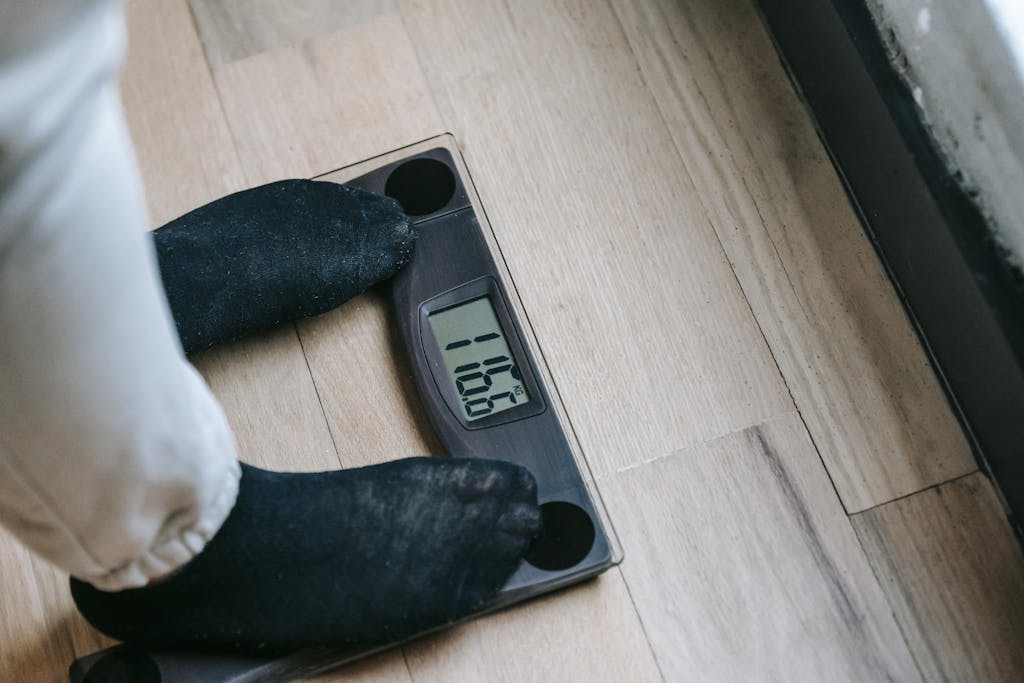Building Sustainable Habits During Your 30 Day Reset

Building Sustainable Habits During Your 30 Day Reset
- Introduction
- Understanding Habit Formation
- Setting Clear, Achievable Goals
- Creating a Supportive Environment
- Leveraging Technology and Tools
- Staying Motivated
- Adjusting Habits Over Time
- Conclusion
- Take Action and Recommended Reading
1. Introduction
Embarking on a journey to improve your health and wellness requires more than just a temporary commitment—it demands the formation of new, sustainable habits. The 30 Day Reset program provides a structured approach to initiate these life-changing habits, offering a clear path to a healthier lifestyle. This guide will walk you through essential strategies to establish habits that last well beyond the initial 30 days, helping you to achieve and maintain your health and wellness goals.
2. Understanding Habit Formation
To successfully create lasting changes during the “30 Day Reset,” it is crucial to understand how habits work. Habits are the small decisions and actions we perform automatically throughout the day without much thought. These patterns are encoded in the three-part loop of cue, routine, and reward.
- Cue: A cue triggers your brain to initiate a behavior. It is a bit of information predicting a reward. Cues can be anything from a time of day, an emotional state, or an environmental factor that tells your brain to go into automatic mode and which habit to use.
- Routine: This is the behavior that leads to the reward. It can be physical, mental, or emotional. Establishing a routine during the “30 Day Reset” could involve prepping meals in advance, setting a specific time for meditation, or scheduling regular workout sessions.
- Reward: Rewards are the reason why your brain decides if this particular loop is worth remembering for the future. Over time, if your brain enjoys the rewards, this loop becomes more and more automatic. The reward can be a feeling of energy after a workout, the taste of a healthy meal, or simply the pleasure of ticking off a task from your to-do list.
The Role of Cravings in Habit Formation
Cravings are what drive habits. And understanding how to cultivate cravings makes creating new habits easier. During the “30 Day Reset,” you can intentionally create cravings by associating new elements of your routine with clear rewards. For example, if the goal is to drink more water, try adding a slice of lemon for a refreshing taste or the reward of a short walk after drinking a full bottle. This makes the habit more enjoyable and something to look forward to.
The Importance of Belief
Change might require belief in the possibility of change, especially when facing difficulties. Belief is often bolstered through community, success stories, or even personal victories, however small. Part of your “30 Day Reset” could involve joining a support group or community of others who are also working on resetting their habits. This shared experience can reinforce the belief that change is possible and maintain motivation.
By deeply understanding these mechanisms, you can more effectively harness them to establish healthier habits during your “30 Day Reset” and beyond. This foundational knowledge not only helps in sticking to the new habits but also empowers you to handle challenges more effectively as you know what adjustments to make to keep your new habits rewarding.
3. Setting Clear, Achievable Goals
Setting clear, well-defined goals is crucial for the success of any new habit or lifestyle change, especially during the “30 Day Reset.” Using the SMART criteria—Specific, Measurable, Achievable, Relevant, and Time-bound—can greatly enhance your ability to stay on track and see tangible progress.
Examples of SMART Goals for the “30 Day Reset”
- Specific: Instead of vague intentions like “get more exercise,” specify “walk for 30 minutes every morning before work.”
- Measurable: Ensure that your goal has a quantifiable aspect, such as “drink eight glasses of water a day,” so you can track your progress daily.
- Achievable: Set goals that are challenging yet attainable within the time frame and with the resources you have. For example, if you’re new to exercise, a goal of “complete two 15-minute yoga sessions per week” might be more realistic than aiming for a daily hour-long session.
- Relevant: Your goals should align with your overall lifestyle aspirations. If your broader aim is to improve cardiovascular health, a relevant goal could be “cycle for 20 minutes three times a week.”
- Time-bound: Every goal needs a deadline to prevent procrastination. Setting a goal to “meditate every morning for 10 minutes for the next 30 days” provides a clear timeline for commitment.
By setting SMART goals, you create a framework that not only guides your daily actions but also motivates and keeps you accountable. Each goal acts as a stepping stone towards the larger achievement of maintaining a healthier lifestyle beyond the initial 30-day period. This structured approach helps demystify the process of change, making it more manageable and approachable.
4. Creating a Supportive Environment
Your environment plays a pivotal role in the success of forming new habits. To make lasting changes, modify your environment to reduce temptations and enhance triggers that lead to healthier behaviors. For example, you could keep fresh fruit visible and accessible while storing unhealthier snacks out of immediate reach. Social environments are also influential; sharing your goals with friends or joining a group with similar aims can provide the encouragement and accountability needed to stick with your new habits.

5. Leveraging Technology and Tools
In today’s digital age, numerous apps and tools can support your habit formation. Fitness trackers can help you monitor your physical activity, meal planning apps can simplify healthy eating, and meditation apps can guide your mental health practices. Additionally, setting reminders can help you drink more water, stand up every hour, or prepare for bed at a consistent time, aiding in the development of healthy routines.
6. Staying Motivated
Maintaining motivation is essential for sticking to new habits, especially during a transformative program like the “30 Day Reset.” One effective strategy is to keep a journal to record your progress and reflect on your experiences. Writing down small victories and reviewing them can boost your confidence and help you stay on track. Additionally, visualizing your success can serve as a powerful motivator—imagine how you will feel and look at the end of the 30 days. When facing setbacks, instead of getting discouraged, use them as learning opportunities to fine-tune your approach and keep moving forward.
7. Adjusting Habits Over Time
As you progress through the “30 Day Reset,” it’s important to continually assess and adjust your habits. Not every habit you try to adopt will be a perfect fit initially. Be prepared to tweak your routines as you discover what works best for you. For example, if you find you’re not enjoying your morning workout, consider switching to evenings or trying different types of exercise until you find one that you look forward to. This flexibility helps maintain your momentum and ensures that your new habits are sustainable in the long run.
8. Conclusion
The “30 Day Reset” is more than just a month-long program—it’s the beginning of a lifelong journey towards better health and wellness. By understanding the mechanics of habit formation, setting clear goals, crafting a supportive environment, leveraging modern tools, and staying adaptable, you can build a foundation of habits that will continue to benefit you long after the initial 30 days. Remember, the goal is to make positive changes that stick, transforming not just your body but also your mindset and lifestyle.
9. Take Action
Are you ready to take the first step towards a healthier, more fulfilled life? Start your 30 Day Reset today and commit to developing sustainable habits. Share your progress, challenges, and successes with our community to not only receive support but also inspire others on their own journeys. Together, we can make lasting changes and achieve our wellness goals.
Recommended Reading

We are independent and reader-supported. When you buy through links on our site, we will earn commission.
Here are some recommended books on habits that offer deep insights and practical advice for making lasting changes:
- “Atomic Habits” by James Clear – This book provides a powerful framework for improving every day. James Clear reveals practical strategies that will teach you exactly how to form good habits, break bad ones, and master the tiny behaviors that lead to remarkable results.
- “The Power of Habit” by Charles Duhigg – Duhigg explores the science behind why habits exist and how they can be changed. The book shows how understanding the patterns that shape our lives can help us transform our businesses, communities, and personal lives.
- “The 7 Habits of Highly Effective People” by Stephen R. Covey – A classic in the self-help genre, this book offers a principle-centered approach for solving personal and professional problems. Covey’s seven habits provide a holistic, integrated approach to becoming more effective in achieving your goals.
- “Tiny Habits: The Small Changes That Change Everything” by BJ Fogg – BJ Fogg shows that the key to changing behavior is to start small and build on your successes. This book teaches how to create tiny habits that can lead to significant changes.
- “Better Than Before: Mastering the Habits of Our Everyday Lives” by Gretchen Rubin – In this book, Rubin tackles the essential question: How do we change our habits? She provides an engaging and insightful guide to understanding habits and offers practical advice on how to make the changes we seek.
These books provide a mix of theoretical insights and actionable advice that can help anyone looking to develop new habits or improve their existing ones. Each author offers a unique perspective on the challenges and solutions associated with habit formation.






